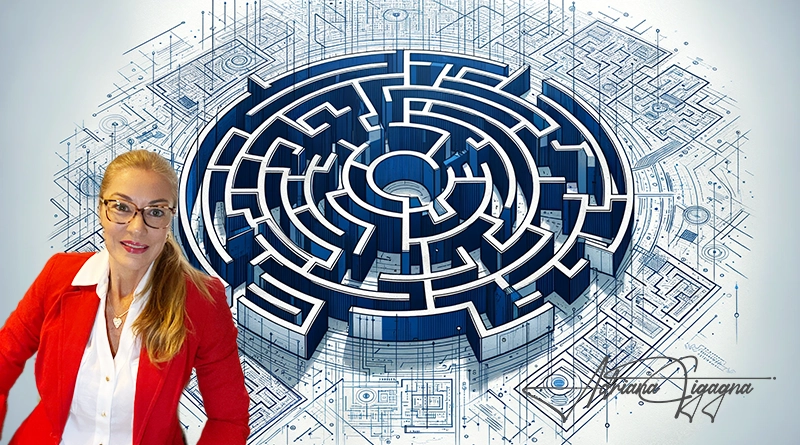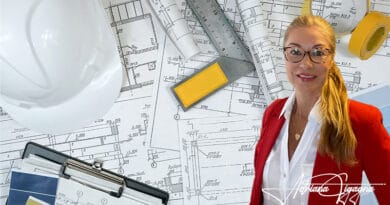Common challenges faced by engineering managers.
The landscape of engineering management is a labyrinth of challenges and opportunities, where the balance between technical expertise and leadership becomes the keystone of success. Drawing from my tenure at Rosen Shingle Creek and beyond, I’ve witnessed firsthand the pivotal role this balance plays in navigating the complexities of engineering projects.
Table of Contents
ToggleScaling and Managing Growth
As organizations grow, engineering managers face the formidable challenge of scaling operations efficiently. This phase requires not just a strategic expansion of systems and processes but also maintaining the quality and integrity of engineering outputs.
Challenges: As we scaled operations, the primary hurdle was ensuring our systems could adapt and expand without compromising on quality. Rapid growth often brings the risk of diluting process integrity and operational standards.
Solutions: Implementing modular systems and adopting agile methodologies proved effective. By encouraging flexibility and adaptability in processes, we were able to maintain high standards of quality even as project demands increased. Regular audits and feedback loops were instituted to identify areas for improvement continuously.
The evolution from scaling operations to fostering an environment of continuous learning and innovation underscores the transformative journey of an engineering team. It highlights the transition from addressing external growth challenges to cultivating internal adaptability and forward-thinking.
Continuous Learning and Innovation
In an industry characterized by rapid technological advancements, continuous learning and innovation form the backbone of a competitive engineering team. This section delves into the strategies for promoting a culture of perpetual growth and adaptability, ensuring the team remains at the forefront of innovation.
Challenges: Keeping a team on the cutting edge of technology and methodology in a rapidly evolving field can be daunting. The inertia of “the way we’ve always done it” can stifle innovation.
Solutions: I championed a culture of learning, where time was allocated for team members to explore new technologies and methodologies. This was complemented by structured training programs and innovation workshops, ensuring that continuous learning was embedded in our operational DNA.
With the foundation of continuous learning solidly in place, the focus shifts towards the management of technical debt. This transition reflects the balance between pushing the boundaries of innovation and maintaining the integrity and sustainability of existing systems.
Technical Debt Management
Technical debt poses a significant challenge in engineering management, requiring a strategic approach to balance innovation with the maintenance of existing systems. Effective management of technical debt is crucial for ensuring long-term project health and operational efficiency.
Challenges: Balancing the creation of new features with the necessity of addressing technical debt is a constant juggling act. Ignoring technical debt can lead to inefficiencies and increased risk over time.
Solutions: We adopted a proactive approach to technical debt by integrating its reduction into our regular sprints, ensuring that addressing debt became a part of our development cycle rather than an afterthought. This approach required transparent communication with stakeholders about the importance of technical health for long-term project sustainability.
Beyond the technical aspects of engineering management, there lies the equally important challenge of building a diverse, equitable, and inclusive workplace. The shift towards promoting DEI initiatives represents a broader understanding of success, emphasizing the value of diverse perspectives and a supportive work environment.
Promoting Diversity, Equity, and Inclusion
Creating an inclusive culture within the engineering field is not just a moral imperative but a strategic one. This section explores the importance of diversity, equity, and inclusion in driving innovation, enhancing team performance, and fostering a positive workplace culture.
Challenges: Creating an inclusive culture in a traditionally homogenous field often encounters resistance and a lack of understanding about the benefits of diversity.
Solutions: We initiated DEI training programs and established diversity hiring goals. Regular forums for open dialogue helped in addressing unconscious biases and fostering an environment where every team member felt valued and included. We measured our progress through surveys and retention rates, adjusting our strategies to ensure continuous improvement.
As we consider the well-being of diverse teams, attention turns towards the critical issue of preventing burnout. Ensuring the mental health and well-being of team members is not only essential for individual satisfaction but also for the overall productivity and success of the team.
Preventing Burnout and Ensuring Well-being
In the high-pressure environment of engineering, managing workloads to prevent burnout is a key challenge. This section outlines strategies for promoting work-life balance, supporting mental health, and creating a work environment that prioritizes the well-being of every team member.
Challenges: High-pressure projects and tight deadlines can lead to burnout, affecting mental health and productivity.
Solutions: Implementing flexible work schedules, encouraging regular breaks, and promoting a culture where overtime is the exception rather than the norm helped in mitigating burnout. Additionally, providing access to wellness resources and mental health support services ensured that team members felt supported both professionally and personally.
Setting Clear Goals and Expectations
Clear goals and expectations are the compass that guides engineering teams towards success. This section emphasizes the role of effective goal-setting in achieving alignment, motivating team members, and driving productivity.
Challenges: Misalignment between team objectives and organizational goals can lead to inefficiencies and frustration.
Solutions: Adopting the SMART (Specific, Measurable, Achievable, Relevant, Time-bound) framework for goal setting ensured clarity and alignment. Regular review meetings allowed for adjusting goals as needed, ensuring that the team remained focused and motivated.
Attracting and retaining top talent is intrinsically linked to the clarity of goals and the culture of continuous improvement. The next section transitions into the strategies for hiring and nurturing the talent that will propel the organization forward.
Hiring and Retaining Talent
In the competitive landscape of engineering, attracting and retaining skilled professionals is a critical challenge. This section examines the approaches to streamline the hiring process and cultivate an organizational culture that encourages talent retention.
Challenges: The competitive nature of the engineering field makes attracting and retaining top talent challenging.
Solutions: We refined our hiring process to focus on cultural fit and potential for growth, in addition to technical skills. Offering continuous professional development opportunities and creating a supportive work environment were key to retaining talent.
The continuous evolution of technology demands that teams not only retain their best but also stay ahead of the curve in technological advancements. This sets the stage for exploring how teams can foster a culture of innovation and embrace new technologies.
Keeping Up with Technological Advancements
Staying abreast of technological advancements is essential for any engineering team aiming to maintain a competitive edge. This section looks into the strategies for continuous learning and encouraging the exploration of new technologies.
Challenges: The rapid pace of technological change can render skills and methods obsolete quickly.
Solutions: Encouraging a culture of experimentation and providing platforms for sharing and implementing new ideas kept the team engaged and ahead of the curve. Partnering with technology providers for early access to tools and training ensured we stayed at the forefront of innovation.
Effective communication is the lifeline that ensures the seamless integration of new technologies and the alignment of team efforts. The transition to exploring communication skills highlights the importance of clear, concise, and effective exchanges within the team.
Effective Communication Skills
Clear and effective communication is foundational to the success of engineering projects and teams. This section focuses on overcoming communication barriers to enhance team cohesion, efficiency, and project alignment.
Challenges: Engineering teams often struggle with communication, leading to misalignment and inefficiencies.
Solutions: Implementing clear communication protocols and tools streamlined information flow. Regular team-building activities and workshops on effective communication practices helped in breaking down barriers and fostering a cohesive team environment.
As we refine our communication strategies, we also broaden our perspective on measuring team success. Moving beyond traditional metrics, we explore the qualitative and quantitative measures that truly reflect the team’s achievements and morale.
Measuring Team Success Beyond Throughput
Evaluating the success of an engineering team requires a nuanced understanding of performance metrics that go beyond simple throughput. This section delves into the diverse metrics for assessing team success, including morale, innovation, and customer satisfaction.
Challenges: Traditional metrics often overlook qualitative aspects such as team morale and satisfaction.
Solutions: We expanded our success metrics to include employee engagement scores, client satisfaction levels, and innovation rates. This holistic approach to success metrics ensured that we valued and nurtured the team’s well-being and motivation alongside achieving project milestones.
Managing a multigenerational team introduces unique challenges and opportunities, necessitating a tailored approach to leadership. The final transition in our exploration considers how diverse team dynamics enrich the engineering management landscape.
Managing Multigenerational Teams
The diversity of a multigenerational team brings a wealth of perspectives and experiences but also requires nuanced leadership strategies. This section explores the challenges and opportunities presented by age diversity in engineering teams.
Challenges: Bridging the gap between different generations can be challenging due to varying work styles, expectations, and communication preferences.
Solutions: Tailored leadership approaches and mentorship programs leveraged the strengths of our diverse team. Creating opportunities for cross-generational collaboration and learning fostered mutual respect and understanding, enriching our team dynamics.
The journey through the multifaceted challenges of engineering management culminates in a reflection on the role of leadership. As we navigate these complexities, the enduring importance of adaptive, inclusive, and visionary leadership becomes clear, shaping the path towards building successful, resilient, and innovative engineering teams.
Conclusion
The journey through the complexities of engineering management is ongoing and ever-evolving. The strategies outlined here, drawn from my experiences, highlight the multifaceted approach necessary to navigate these challenges successfully. Leadership in this context is about more than just guiding projects to completion; it’s about building resilient, innovative, and cohesive teams capable of exceeding the sum of their parts.





